Aquileia, Italy: Outpost of the Empire
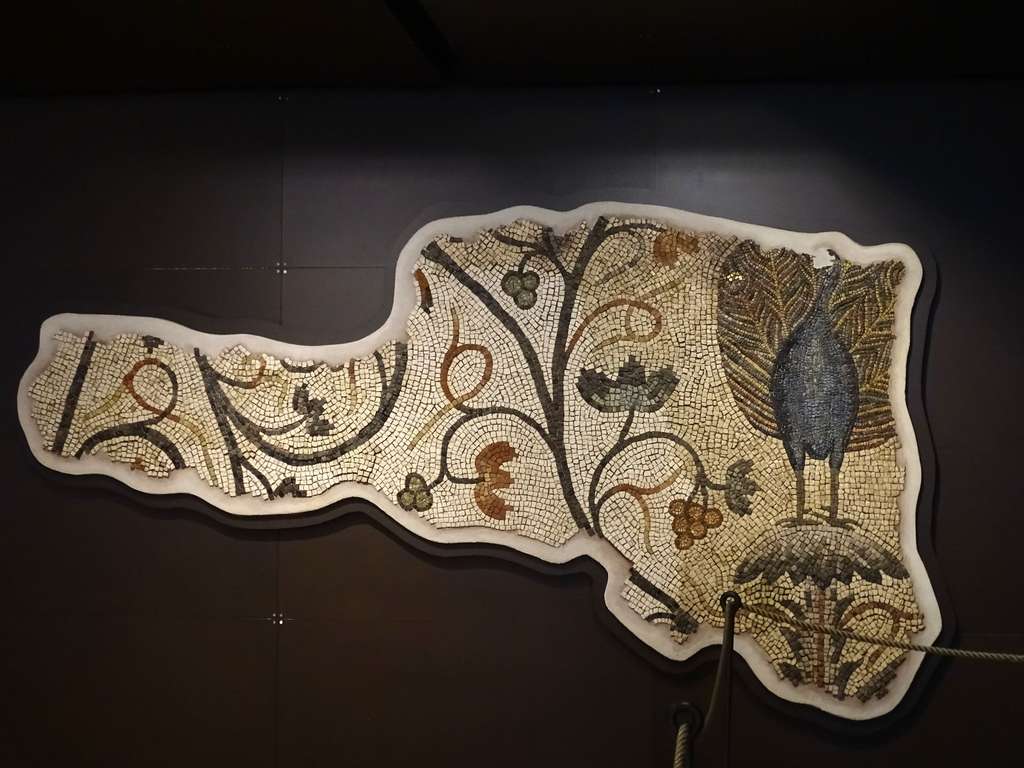
{ (729)}
You will need a couple of hours to walk around Aquileia, and not only time but also a certain amount of imagination to understand it. After turning off the highway, the road to Aquileia stretched drying up like a stream among the bare fields. Cold sun was high and gave the landscape an unusual orange color. When ancient columns started to flash on the left, we realized that we finally got to the famous ancient Roman city. It was about three o’clock in the afternoon. In Italy, this means that all the restaurants are closed until the dinner and there is a risk of not finding even crusts of bread until the evening in a small town. We could imagine the size of Aquileia: its population in the beginning of the Christian era was more than one hundred thousand people, but now – just over three thousand. Indeed, not a single person could be seen in the streets.

Fortunately, we found a restaurant where cozy fire crackled in a woodfired oven. “Do you serve garum here?” I asked the waitress closing the menu. “What?” “Okay, nothing, please bring us tartar.” It is so surprising that an Aquileian waitress has no idea of garum while any of the foreigners sitting in this restaurant for sure knows what it is. Once the sauce made from fermented fish entrails, heads, ridges and herbs (reminiscent of Asian nam pla) was a delicacy in Aquileia and even in the entire Roman Empire. As Pliny the Elder wrote, “There was no fluid, except perfumes, which would cost more. For two congiums (jars 3.28 liters in volume – Ed.) of first class garum one had to pay one thousand sesterces!” That was the amount enough to buy four mules.
A few steps from the pizzeria an information center showed up where we were given a map of the city. “Here is a good route to walk,” the officer said. “The Basilica, then the river port, the so-called archaeological promenade, the Forum, and further the necropolis, excavated villas, Paleo-Christian and Archaeological Museums. You’ll need two hours to see these all.” Looking ahead, I will say that Aquileia has not let me go so far. I recall it again and again, live through it and paint it, so my personal itinerary lasts much, much longer than two hours. Aquileia just requires some imagination. It is like a children’s coloring book where there are only contours marked by thin pencil line and somewhere there is just a “connect-the-dot pattern.” Construction of Aquileia was started in 183 B.C. It was to serve as the Eastern outpost of the Roman Empire.

The road Via Aemilia was laid to the Adriatic swampy lowlands, a port was built on the Natizo river, the settlement was surrounded by massive fortified walls with towers. Twelve years later, a letter was sent to the capital city asking for sending another one and a half thousand of families as they could not manage themselves. Paved channels were laid towards the sea to withdraw underground water from the city (one of them is still working though the river has changed its way). And the life there began. During its first two centuries, Aquileia lived in relative peace and prosperity. There is an archaeological map of the city, as it was in the 4th century: a theater, an amphitheater, a circus, big and small baths, schools, cemeteries, warehouses, markets, cobbled streets.
On the river, there was a 400-meter multi-level dock to which ships transporting goods from Tunisia and Spain were moored. You can walk along the port even now: there is no more river there, cypresses murmur in the silence and stone steps come down to high grass. The porticoes, stones with bas-reliefs and heavy rings are waiting patiently for ships to moor there someday. The Forum was the main square and center of Aquileia. Public buildings were situated there decorated with six-meter columns (the ones that we have seen at the entrance to the city), voting and assemblies were arranged. Now, a football field and vineyards are located behind the Forum. In the excavation area you can wander through the ruins of the houses of the rich. No gardens, no baths, no reception rooms have survived but mosaic floors – stone carpets with peacocks and patterns – will lay forever under the sky.
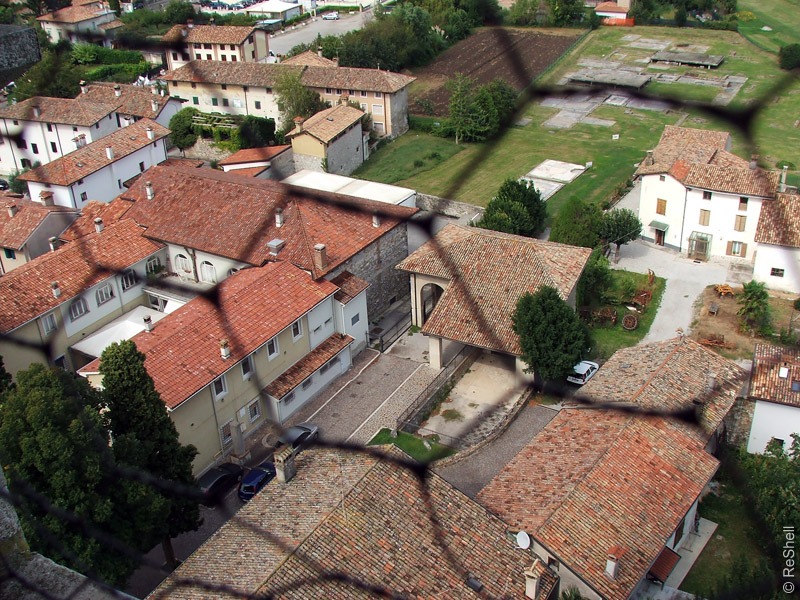
Everything else that was found during the excavations was transferred to the Archaeological Museum. The museum is the last stop on the route. It sounds paradoxical but it is the most lively place in the city. Finally, you can see the Aquileians: men and women, young and old. With amazement I make sure that the faces I see are exactly the same people as we are but on the other side of eternity: these are funerary sculptures, which were put on the monuments along the city roads. You can find their names, for example, Septimus Theodulus or Maya Severa (on the funeral stone she is displayed looking in the mirror). And preferences. One young lady had a toga all studded with tiny golden flies. And some guy paid for his head (made of stone) to be adapted to the mighty athletic torso that decorated the main pool of the large bath. Other citizens asked to perpetuate themselves in the mosaics in their own homes, and their intuition did not fail, mosaics survived them all. The city was rich and mosaics adorned even dining tables: among the Nereids and sea gods, hunting scenes and athletes was found a 4th-century tabletop showing scattered fish heads, bones, feathers, shells, like a lunch had just ended. Some time would pass and in 452 the city would be destroyed by Attila, the leader of the barbarians, after which some of the city’s residents would run away into the lagoon where they would found a new city named Venice.
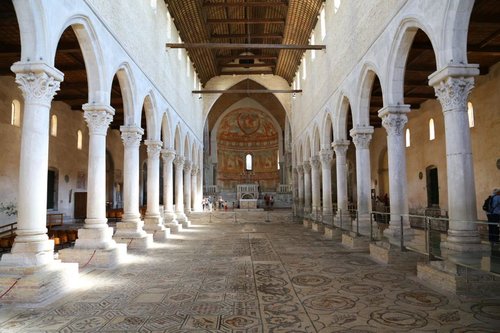
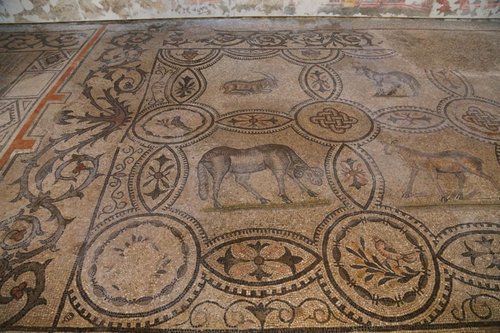
1. A copy of the Capitoline she-wolf feeding Romulus and Remus brothers was sent to Aquileia from Rome in 1919 in honor of the 2100th anniversary of founding the Adriatic colony
2,3. Many tourists who enter the Basilica and see the mosaic can not hide their surprise: octopuses, cuttlefish, turtles, lobsters and other marine reptiles are laid out on the floor
4. The building of the Basilica was constructed in the 11th century and in the 14th century it was additionally rebuilt so this temple has no formal relevance to the Roman Empire. However, its main pride is the largest mosaic floor in the world preserved (768 m2 in the area) since ancient Roman times and some fragments are even older: they served as floor decoration at a very rich private villa.
5. Systematic excavations and restoration work in Aquileia were commenced in the late 19th century but new artifacts are still found every year
6. The museum’s collection includes an enormous amount of different bottles made of colored glass. The Aquileians used the little ones for storing perfumes and balms, the large ones for pomegranate and rose petal wine
7. In the past, the Aquileian Forum was a bustling center of social and political life of the city
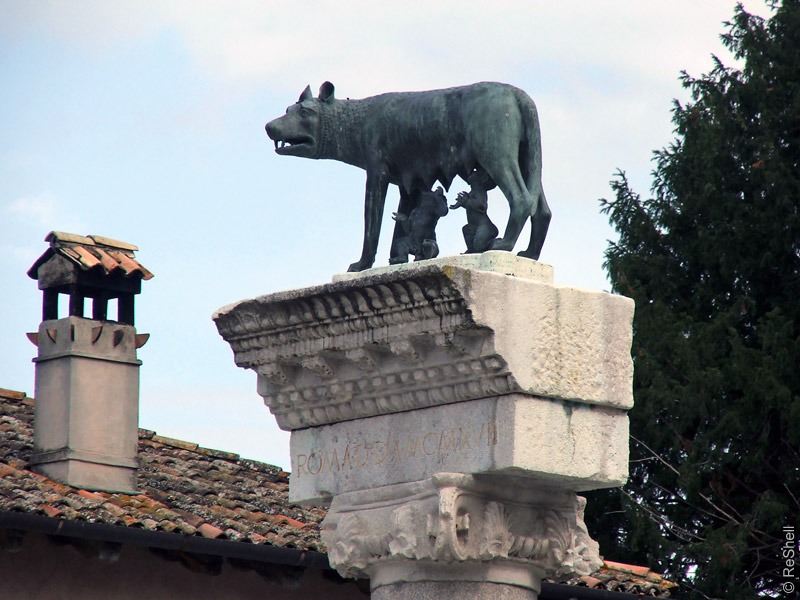
Information
● How to get there by car (A4 venezia–trieste highway) or by train to the station of cervignano-Aquileia-grado (one and a half hour), and from there by bus (seven kilometers) that departures to Aquileia soon after the arrival of the train.
● Information the tourist center is located in the parking lot at the entrance to the city in the street via Julia Augusta. you can also obtain information in the pro loco Aquileia office located at piazza capitolo, 4, and in a souvenir shop near the basilica (on the right from the entrance).
● Sights the cost of a single ticket that includes entry to the two crypts of the Basilica, the bell tower and to the Archaeological museum is €9. Open-air areas of archaeological excavations are only accessible until sunset.
{ (travel)}
